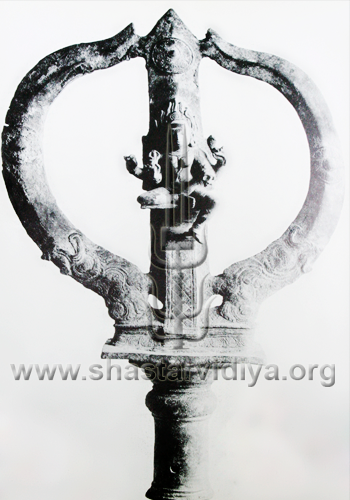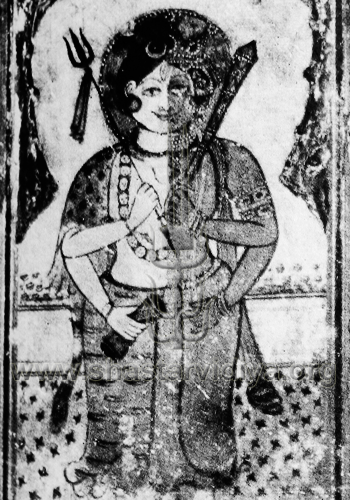
"...at the time of the public festivals, in which the worship of the Shakti is performed, a large number of goats, sheep and buffaloes are sometimes sacrificed..."
(The Calcutta Review)
The final style of Sanatan Shastar Vidiya, this is the form of androgynous Shiva. It represents the complete harmony of the universal female energy and male energy - personified by Shiva and his consort the Devi. Here, the scientific principles of kinetic energy and the attracting, compressive/gravitational energy combine, both supplementing and complementing each other. In effect, all the Yudhan accumulate to become one syncretised whole. Having mastered all the distinctive timings of each Yudhan, it is also known as 'Sarbkal' (all time) Yudhan.
When achieving mastery of this Yudhan, one is said to have ascended the sacred mountain of Shiva known as Kailash. Once here, one can see all perspectives, from all sides, be they martial or otherwise; it makes for a truly open-minded and enlightened individual. It is said, that here one attains onto Shiva; the Yudhan have reached their 'dhanatmak avastha' (positive stage), i.e., their peak expressive height. The next logical step from this point is to descend the mountain on the opposite side. This is known as 'renatmak avastha' (negative state), i.e., deconstruction of the Yudhan and removal of all outward form. Metaphorically, and also from a philosophical perspective, this stage is considered as venturing beyond 'sarguna' (imminent) Shiva to the eternal 'nirguna' Shiva � 'Sadha Shiva'; in essence, infinite Brahm/Vaehguru (the all-pervasive supreme being).
Further to this are eleven stages of deconstruction of within the Shastar Vidiya Yudhan and in this way the art truly becomes natural spontaneous, versatile and formless.
As these teachings of Sanatan Shastar Vidiya are said to be infinite, one is always considered a 'shagird' (student) and never really a master of it. The title 'Gurdev' is there as from; a merely mundane functional perspective it is required. From a greater perspective there are no Gurdev; all are essentially eternal students.
When utilised as part of a classical duel, the unarmed Ardhanarishvara Yudhan is initiated with certain ritualistic movements of the arms. These serve as symbolic depictions of a creation myth eulogised in Hindu mythology. Further information will be detailed in a forthcoming book. Guru Gobind Singh writes of lethal duels starting in this ritualistic manner:
"Slapping arms to a ferocious rhythm they cast great warriors to the ground snapping necks backward. Smashing warriors to the ground, snapping necks sideways and backwards with aggression, they strike sword blows."
(Sarbloh Guru Granth Sahib, 1:210-211)





